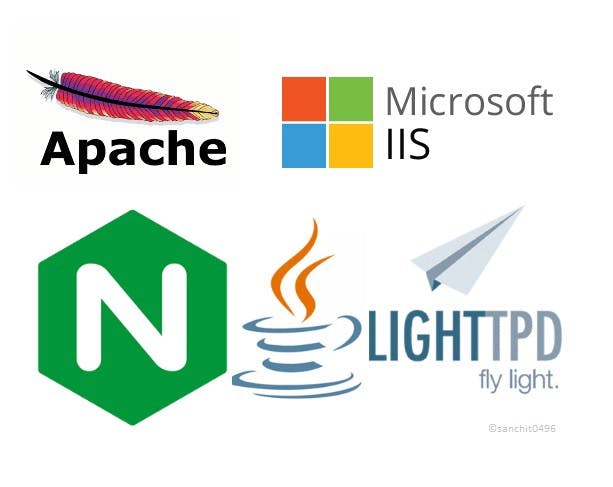Introduction to Web and HTML
What do you mean by web server, How does it work and types of webserver
What is WebServer?
The web server is something that helps us to deliver content and the content may be anything, for example a webpage or other data, it works as a both hardware and software. The most common use of webserver is to host websites.
How Does It Work?
so we can have some basic idea from the image that the browser is requesting for that file, how can the browser get those files that are being hoisted in some webserver, if the browser needs that files then the request should be made through/via HTTP(Hyper Text Transfer Protocol) there are some other ways to request content also like IMAP(Internet Message Access Protocol)and FTP(File Transfer Protocol) but out of all HTTP is the most common request, so here the request will be done and if those particular content/files are available then through the response the server will send those requested documents to the browser, and if those documents are not available then the server will return 404 as a response that means the server wouldn't able to find the requested documents.
I tried to explain very simple manner how the server works if someone wants to get some more details about it then click on the link below for a deeper understanding.
Types of Servers...

Apache Webserver
Microsoft IIS Webserver
Lighttpd Webserver
Ngnix Webserver
Sun Java System Webserver
Apache Webserver
Apache is one of the most commonly used live servers, its supports all operating(Windows, Linux, Mac, Apple) system and it is an opensource, though it is an open source it is free and its community support is also very huge,
Apache is considered open-source software, which means the original source code is freely available for viewing and collaboration. Being open source has made Apache very popular with developers who have built and configured their own modules to apply specific functionality and improve on its core features.
Microsoft IIS Webserver
The Microsoft IIS Webserver is designed by Microsoft for the use of Microsoft windows, and is also one of the most commonly used webserver after Apache. This is not an open-source so if we want to modify it as per the project requirements then it will not allow us to do it, we can do all these modifications in an opensource software just like Apache because its source code is available freely so we can do changes as per our requirements.
Lighttpd Webserver
The Lighttpd Webserver is known for its high performance, speed security, and flexibility it is an open source webserver software, and it is specially designed for environments with limited resources because it consumes less RAM and CPU, it is suitable for both Windows and Linux Operating Systems , it supports all programming language and it is free to use, it is not as popular like other websevers so here you will find less community support
HTML(Hyper Text Markup Language)
HTML stands for Hype Text Markup Language and it is a mostly used web languages to write webpages.
There are two types of tags the one which holds some content. And the other one which doesn't holds some content which is otherwise known as self closing tags
<tag>....</tag>:- hold some content inside it
<tag>:- it doesn't hold any content just a self-closing tag.
Some HTML Tags(Heading Tag and Paragraph Tag):
h1 tag : <h1>write content here</h1>
h2 tag: <h2>write content here</h2>
p tag: <p>write content here</p>
<!DOCTYPE html>
<html lang="en">
<head>
<meta charset="UTF-8">
<meta http-equiv="X-UA-Compatible" content="IE=edge">
<meta name="viewport" content="width=device-width, initial-scale=1.0">
<title>Document</title>
</head>
<body>
<h1>Hello</h1>
<h2>Hello</h2>
<p>Lorem ipsum dolor sit amet consectetur adipisicing elit. Cupiditate accusantium, corporis impedit ut vitae aliquid eos earum incidunt sint, nulla tempora veniam quo itaque eveniet praesentium! Tempore autem dignissimos assumenda cumque, impedit ipsa vitae modi distinctio aperiam cupiditate minus alias.</p>
</body>
</html>
Image Tag(<img>)
<img src="" alt=""> syntax for image tag

